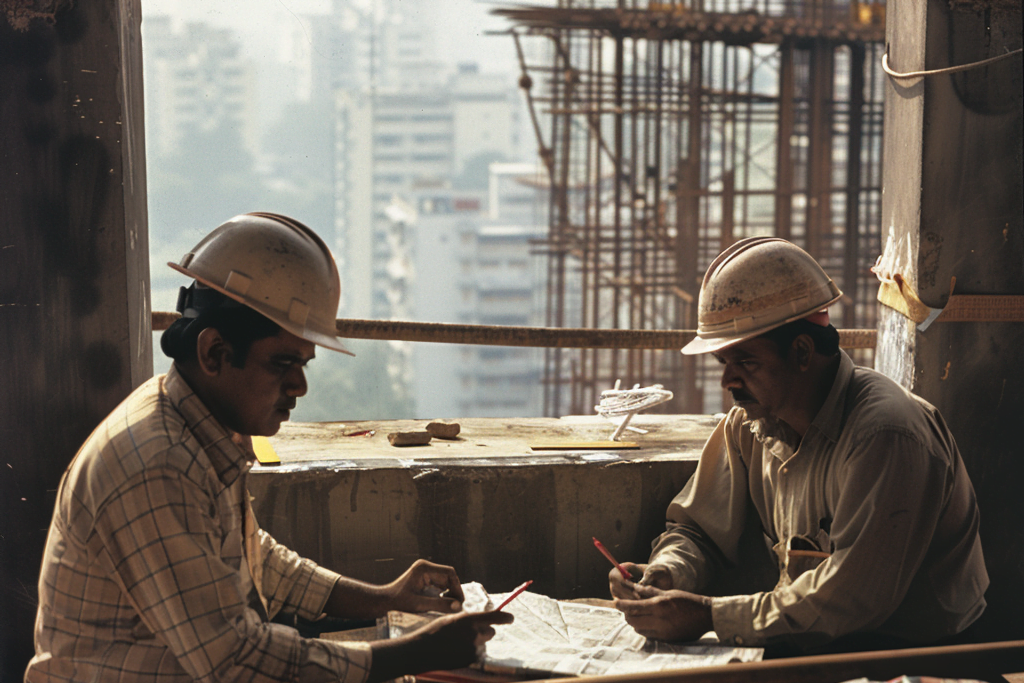In the dynamic landscape of India’s economy, design and build businesses hold immense potential for growth and innovation. Whether in the realm of architecture, interior design, construction, or related services, these businesses play a pivotal role in shaping the physical environment and infrastructure of the country. However, scaling such enterprises in India comes with its own set of challenges and opportunities. In this comprehensive guide, we delve into the strategies, best practices, and data-backed insights essential for scaling design and build businesses effectively in India.
Understanding the Indian Market
Before diving into scaling strategies, it’s crucial to understand the unique characteristics of the Indian market. India’s economy is one of the fastest-growing in the world, with a burgeoning middle class and increasing urbanization driving demand for infrastructure and real estate development. Additionally, initiatives like “Make in India” and “Smart Cities Mission” underscore the government’s commitment to fostering growth and innovation in various sectors, including design and construction.

Overcoming Regulatory Hurdles: Navigating the Complexities of India’s Design and Construction Sector
The design and construction industry in India pulsates with vitality, fueled by rapid urbanization, infrastructure development, and architectural innovation. Yet, amidst this dynamic landscape lies a formidable challenge – navigating the labyrinth of regulatory hurdles that often impede progress and stifle growth for businesses operating in the sector.
Understanding the Regulatory Landscape
India’s regulatory framework governing the design and construction sector is intricate, comprising a multitude of laws, codes, and regulations at various levels of government. From land acquisition to environmental clearances, building permits to safety standards, businesses must traverse a complex maze of bureaucratic procedures to bring their projects to fruition.
Obtaining Permits: A Daunting Task
Securing permits for project commencement is a critical yet daunting task for design and construction businesses in India. The bureaucratic red tape, coupled with lengthy approval processes, often leads to project delays and cost escalations. Moreover, the inconsistency in permit issuance across different jurisdictions exacerbates the challenges, necessitating businesses to navigate each region’s regulatory landscape with care and diligence.
Compliance with Building Codes: Upholding Safety Standards
Ensuring compliance with building codes and regulations is paramount for businesses to uphold safety standards and mitigate legal risks. However, staying abreast of evolving regulatory requirements and incorporating them into project plans can be a daunting task. Failure to comply with regulations not only exposes businesses to legal liabilities but also tarnishes their reputation in the market.
Strategies for Overcoming Regulatory Hurdles
While navigating regulatory hurdles in India’s design and construction sector may seem daunting, businesses can adopt several strategies to streamline processes and enhance compliance:
Strategies for Scaling Design and Build Businesses in India
Scaling a design and build business in India presents both challenges and opportunities. However, with the right strategies in place, businesses can overcome obstacles and tap into the vast potential of the market. Here are several effective strategies for scaling design and build businesses in India:
Invest in Technology
Embracing digital tools and technology solutions is essential for staying competitive and efficient in the design and construction industry. Technologies such as Building Information Modeling (BIM), virtual reality (VR), and project management software can revolutionize the way projects are planned, designed, and executed. BIM, for instance, allows for better collaboration among stakeholders, improves project visualization, and enhances decision-making throughout the construction process. By investing in technology, design and build businesses can streamline processes, improve efficiency, and deliver projects with greater accuracy and speed.
Build Strategic Partnerships
Collaborating with other businesses, contractors, suppliers, and government agencies can significantly expand the reach and capabilities of design and build businesses. Strategic partnerships enable businesses to access new markets, leverage complementary strengths, and mitigate risks. For example, partnering with local contractors or suppliers can provide access to specialized resources and knowledge of regional markets. Similarly, forming alliances with government agencies or industry associations can facilitate smoother project approvals, regulatory compliance, and access to funding opportunities. By building strategic partnerships, design and build businesses can amplify their impact, scale more effectively, and seize new growth opportunities.
Adopt Sustainable Practices
With sustainability becoming increasingly important in the construction industry, adopting green building practices is not just an ethical choice but also a strategic one. Integrating sustainable design principles, energy-efficient technologies, and environmentally friendly materials into projects can appeal to eco-conscious clients and differentiate design and build businesses in the market. Moreover, sustainable practices can lead to long-term cost savings through reduced energy consumption, lower maintenance costs, and enhanced building performance. By prioritizing sustainability, design and build businesses can align with global trends, meet regulatory requirements, and future-proof their projects against environmental risks.

Customer-Centric Approach
At the heart of scaling any business is a relentless focus on customer satisfaction. Understanding and exceeding customer expectations is paramount for building long-term relationships and driving repeat business. Design and build businesses should prioritize delivering high-quality, innovative solutions tailored to the specific needs and preferences of their clients. This requires active listening, clear communication, and a commitment to excellence throughout the project lifecycle. By putting customers first, design and build businesses can foster loyalty, generate positive word-of-mouth referrals, and establish themselves as trusted partners in the industry.
| Year | Construction Growth Rate (%) | Urban Population Growth (%) | Infrastructure Spending (USD billion) |
|---|---|---|---|
| 2022 | 6.2 | 3.5 | 110 |
| 2023 | 7.8 | 3.8 | 125 |
| 2024 | 8.5 | 4.2 | 140 |
| 2025 (Projected) | 9.2 | 4.5 (Projected) | 155 (Projected) |
Source: Ministry of Housing and Urban Affairs, Government of India
The Growth Trajectory of the Industry

Before delving into the scope for scaling design and build businesses, it’s crucial to grasp the current landscape of India’s construction industry. According to data from the India Brand Equity Foundation (IBEF), the construction sector in India has been experiencing robust growth, with a compound annual growth rate (CAGR) of approximately 6.5% from 2017 to 2020. This growth is fueled by factors such as urbanization, infrastructure investments, and government-led initiatives aimed at bolstering economic development.
Opportunities for Scaling Design and Build Businesses
- Rising Urbanization and Infrastructure Development: India’s urban population is on the rise, driving the need for sustainable infrastructure and real estate solutions. According to the United Nations, India is projected to add 416 million urban dwellers by 2050. This demographic shift presents a vast market for design and build businesses to cater to the growing demand for residential, commercial, and institutional infrastructure.
- Government Initiatives and Investments: The Indian government’s focus on infrastructure development through initiatives like “Smart Cities Mission” and “Atmanirbhar Bharat” presents significant opportunities for design and build businesses. Data from the Ministry of Housing and Urban Affairs indicates that over 100 cities have been selected under the Smart Cities Mission, with a total investment of USD 29 billion allocated for infrastructure projects. This massive investment underscores the government’s commitment to driving urban development and presents a fertile ground for design and build businesses to expand their footprint.
- Emerging Technologies and Innovation: The adoption of innovative technologies such as Building Information Modeling (BIM), prefabrication, and modular construction techniques is revolutionizing the design and construction process in India. According to a report by McKinsey & Company, the adoption of digital technologies in construction could unlock productivity gains of up to 15-20%. This presents an opportunity for design and build businesses to differentiate themselves by embracing technology-driven solutions that enhance efficiency, collaboration, and project outcomes.
- Focus on Sustainability and Green Building: With increasing emphasis on sustainability and environmental conservation, there is a growing demand for green building solutions in India. Data from the Indian Green Building Council (IGBC) indicates that the green building market in India is expected to reach USD 35-50 billion by 2025. This presents an opportunity for design and build businesses to integrate sustainable design principles, energy-efficient technologies, and eco-friendly materials into their projects, thereby attracting environmentally conscious clients and driving market differentiation.
- Diverse Market Segments and Niche Opportunities: India’s construction market is diverse, encompassing a wide range of segments such as residential, commercial, industrial, and infrastructure. Within these segments lie niche opportunities for design and build businesses to specialize and carve out a unique market position. Whether it’s high-rise residential towers, industrial parks, or infrastructure projects like airports and metro systems, businesses can capitalize on their expertise and capabilities to target specific market segments and drive growth.
Conclusion
Scaling design and build businesses in India requires a strategic approach, leveraging technology, talent, partnerships, and market insights. To learn more about effective project management in design and build companies, explore. Despite challenges, the sector presents immense opportunities for growth and innovation, driven by urbanization, infrastructure development, and evolving customer demands. By embracing innovation, sustainability, and customer-centricity, design and build businesses can thrive in India’s dynamic market landscape, contributing to the country’s socio-economic development and infrastructure transformation.




